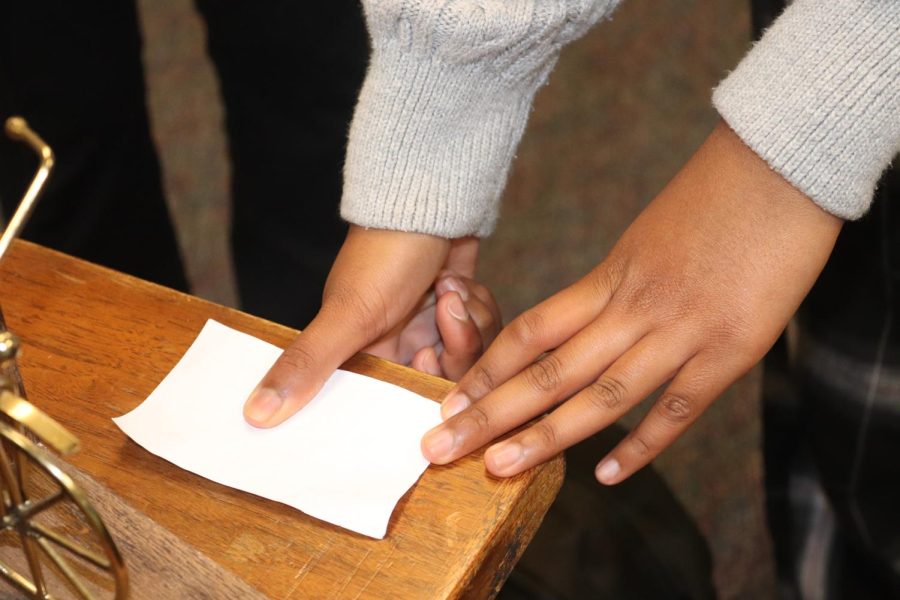Forensic Science Club investigates criminal activities
Students stamp their thumb prints to conduct their fingerprint analysis.
April 5, 2022
Like every crime TV show, Forensic Science Club has a new lead every week to investigate and inspect. During the month of March, members looked at new topics ranging from fingerprint analysis to police interrogation techniques, analyzing the information and applying them in interactive activities.
The club’s officer team planned the month full of hands-on and engaging activities to garner more interest in their club and expand the scope of their meetings beyond just educational slides.
The first week featured police interrogation methods, followed by an online game. Over the next couple of weeks, members went in-depth on other forensic science topics like fingerprint observations and autopsy reports. To conclude a series of meetings with specific topics, the club connected all the dots with a crime analysis game, giving members the opportunity to display all the skills they learned from past meetings.
One of the highlights of the month was fingerprint analysis, for which each student received a sheet of paper to stamp their thumbprint and determined what type of fingerprint they have. As opposed to the normal self-paced online games from previous meetings, students worked as a team and put themselves in the shoes of a forensic scientist.
“We could visually experience what it was like to compare fingerprints,” sophomore member Sindhuja Bokkisam said. “It was like a mini simulation of what actual forensic scientists do, which made the activity really interesting.”
At the end of the meeting, students from the club corroborated that every person had a unique fingerprint after examining their peers’ stamped papers.
Another highlight was the meeting on autopsies and post mortem, the procedure of analyzing dead bodies. Students watched three attention selective tests that made them focus on one task at a time. In one video, students determined how many gumdrops a person was eating while other distractions appeared on the screen. Another video displayed a picture of a road that discreetly changed every couple of seconds. After watching three videos centered around these mind games and deceptions, members learned how to be observant and analytical, skills a forensic scientist must have when examining deceased bodies, since even the smallest mistake can have a large impact on the final report.
Forensic Science Club ended March strong with a crime analysis game bringing together all the topics learned from the month. Students watched a video describing a crime scene and analyzed the scene’s victim, assailant and cause of death. Students watched the video numerous times to absorb the information explained in the video. Afterward, the officers led the members through a step-by-step approach in dissecting the facts of the scenario, allowing them to form their conclusions and guess why law enforcement took the actions that they did.
“Our goal was to inform our club on the different situations forensic scientists experience and we achieved that,” Forensic Science Club President Thomas Zheng said.
Forensic Science Club plans on hosting a meeting on entomology in the near future to expand upon topics discussed throughout the month. The club will continue to host such activities and interactive meetings in the weeks to come to stir curiosity within students and give them more glimpses into the life of a forensic scientist.




























































